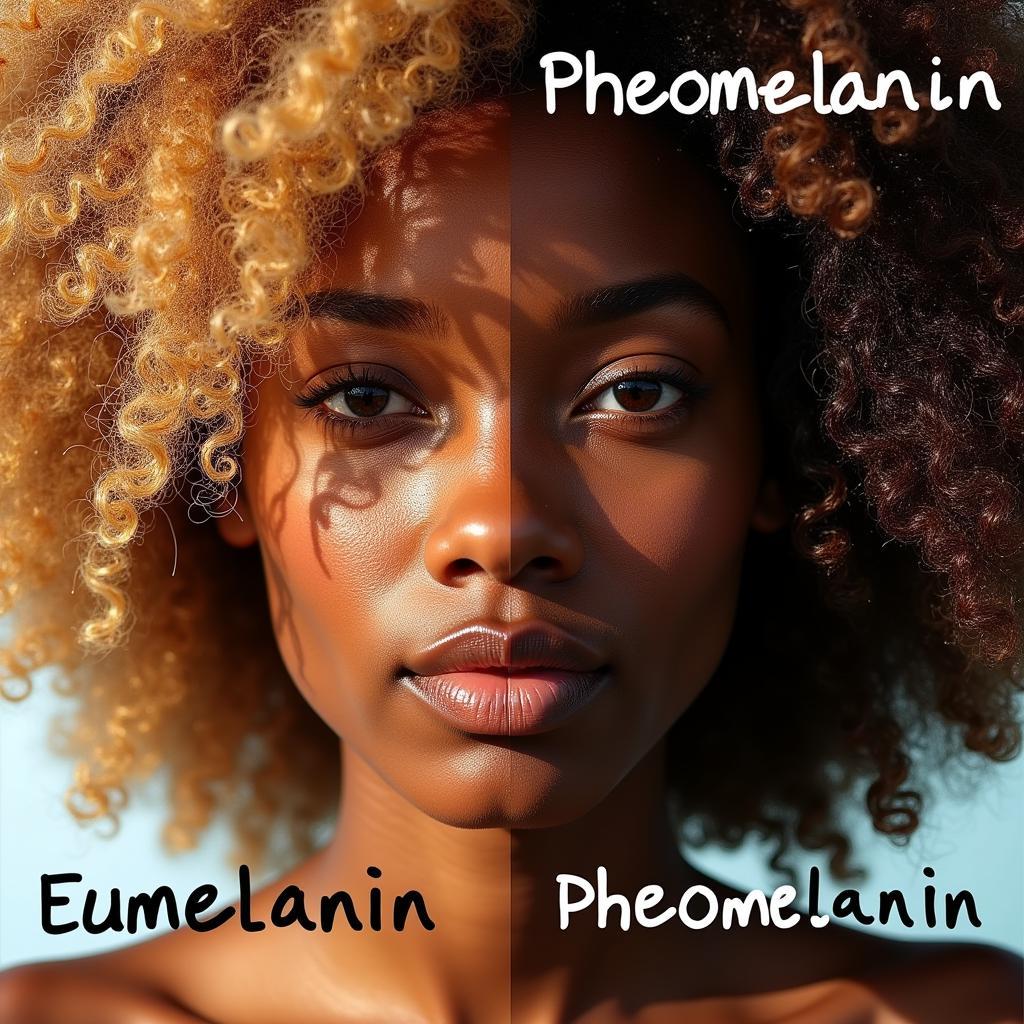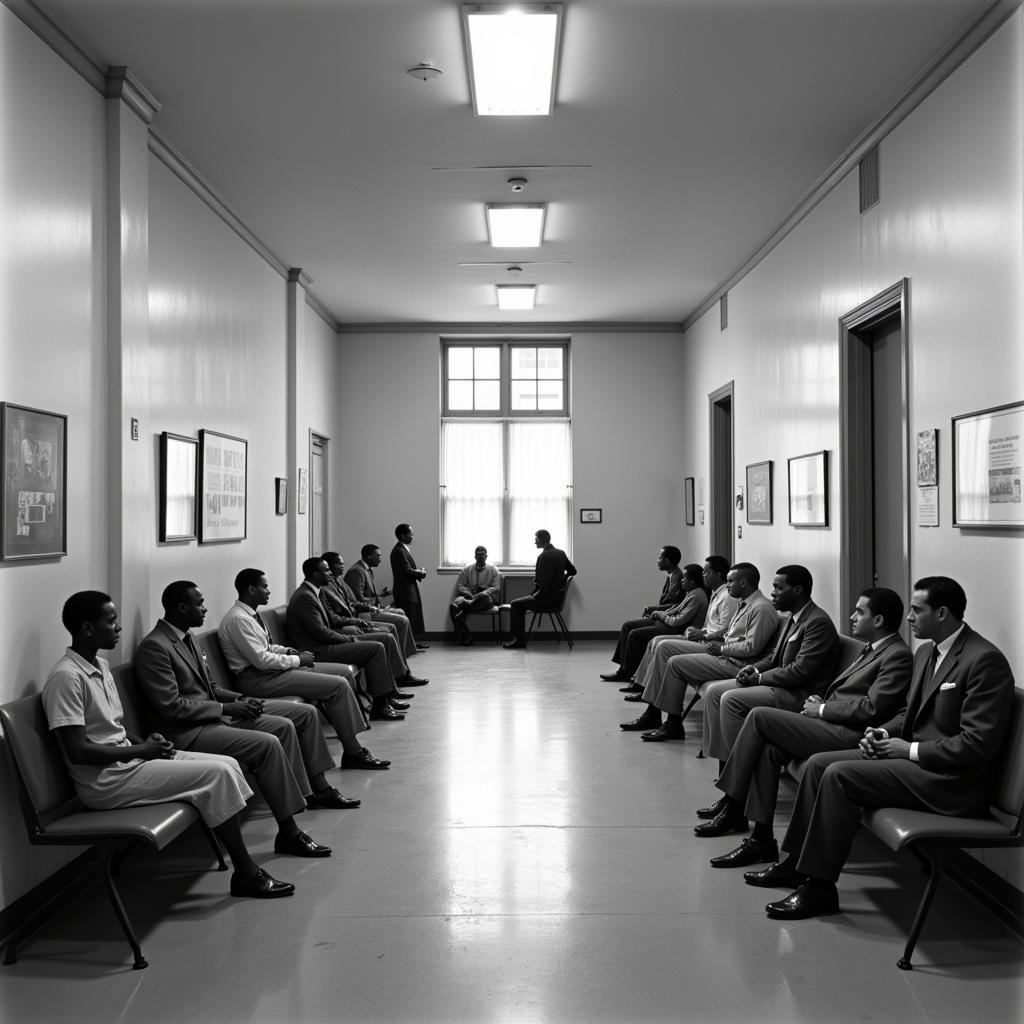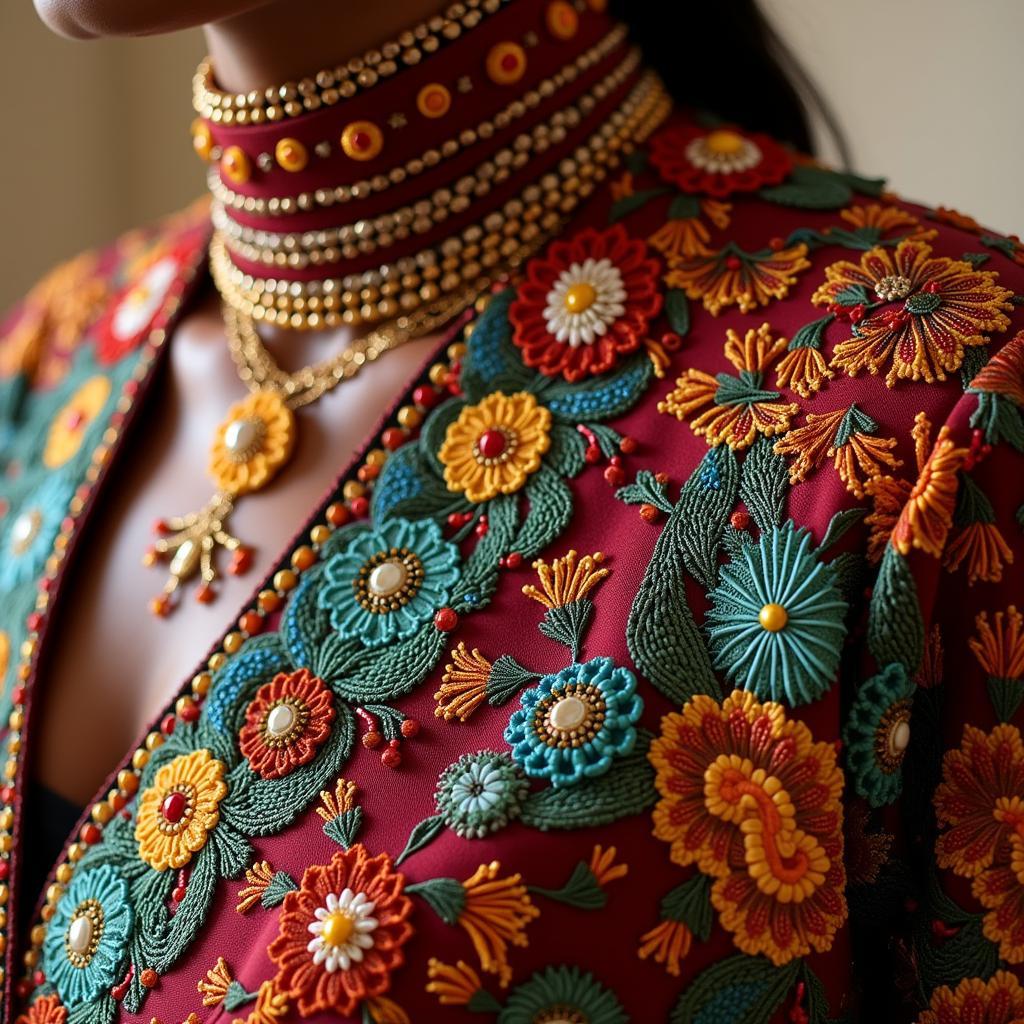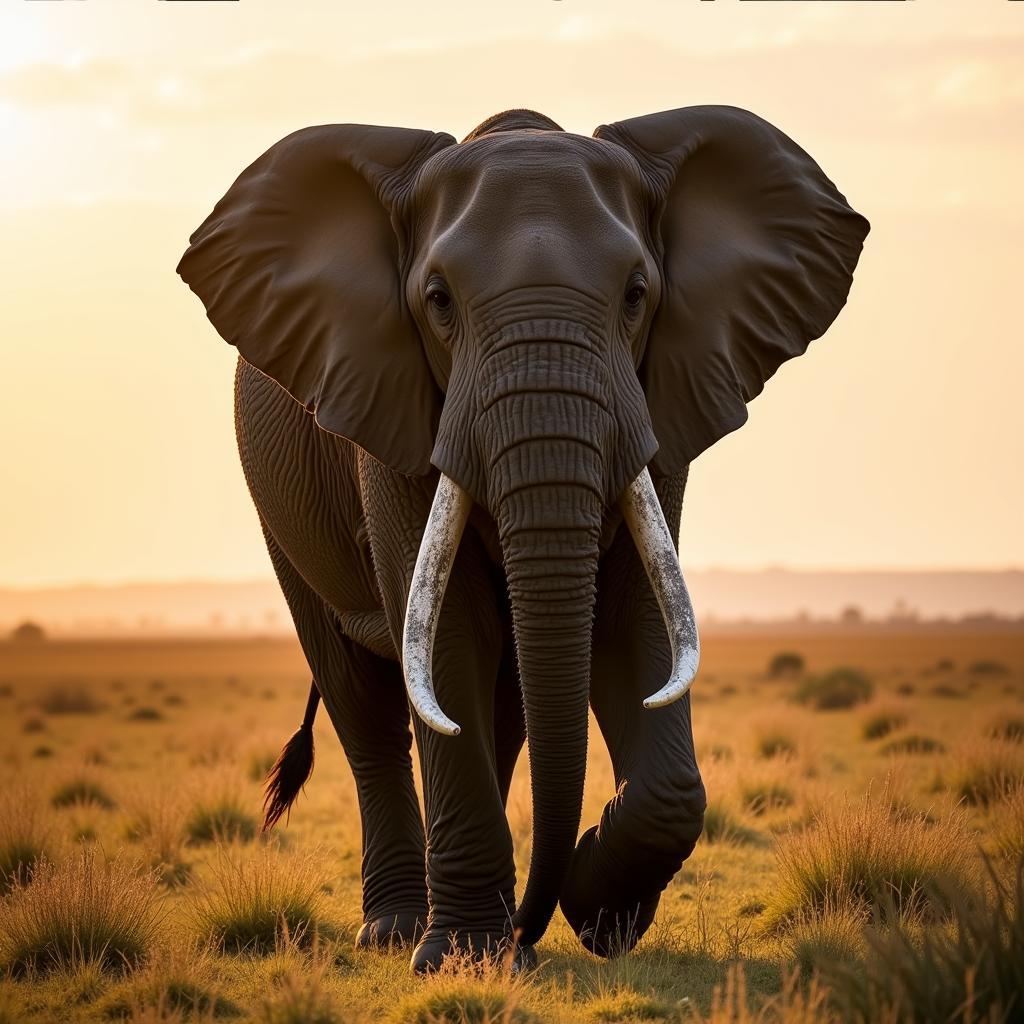Unveiling the Vibrant World of the African Kanga Wrap
The African Kanga Wrap, a vibrant and versatile piece of rectangular cloth, is more than just clothing; it’s a powerful symbol of cultural identity, storytelling, and connection across the African continent. From its practical uses to its profound significance, the kanga tells a story as rich and diverse as the people who wear it. See how this simple garment embodies a vibrant tradition passed down through generations.
A History Wrapped in Cloth: The Origins of the African Kanga
The kanga’s origins are shrouded in fascinating tales. One popular theory points to the mid-19th century in coastal East Africa, where women began adapting bandanas printed in bold colors and patterns. These early kangas, known as “leso,” laid the foundation for the kanga we know and love today. Over time, they evolved, incorporating Swahili proverbs, messages, and even personalized greetings, transforming the simple cloth into a powerful means of communication.
Many associate kangas with specific regions and communities. From the bustling markets of Nairobi to the tranquil villages of Zanzibar, each kanga reflects unique local aesthetics and traditions, making them highly sought-after items for collectors and fashion enthusiasts alike.
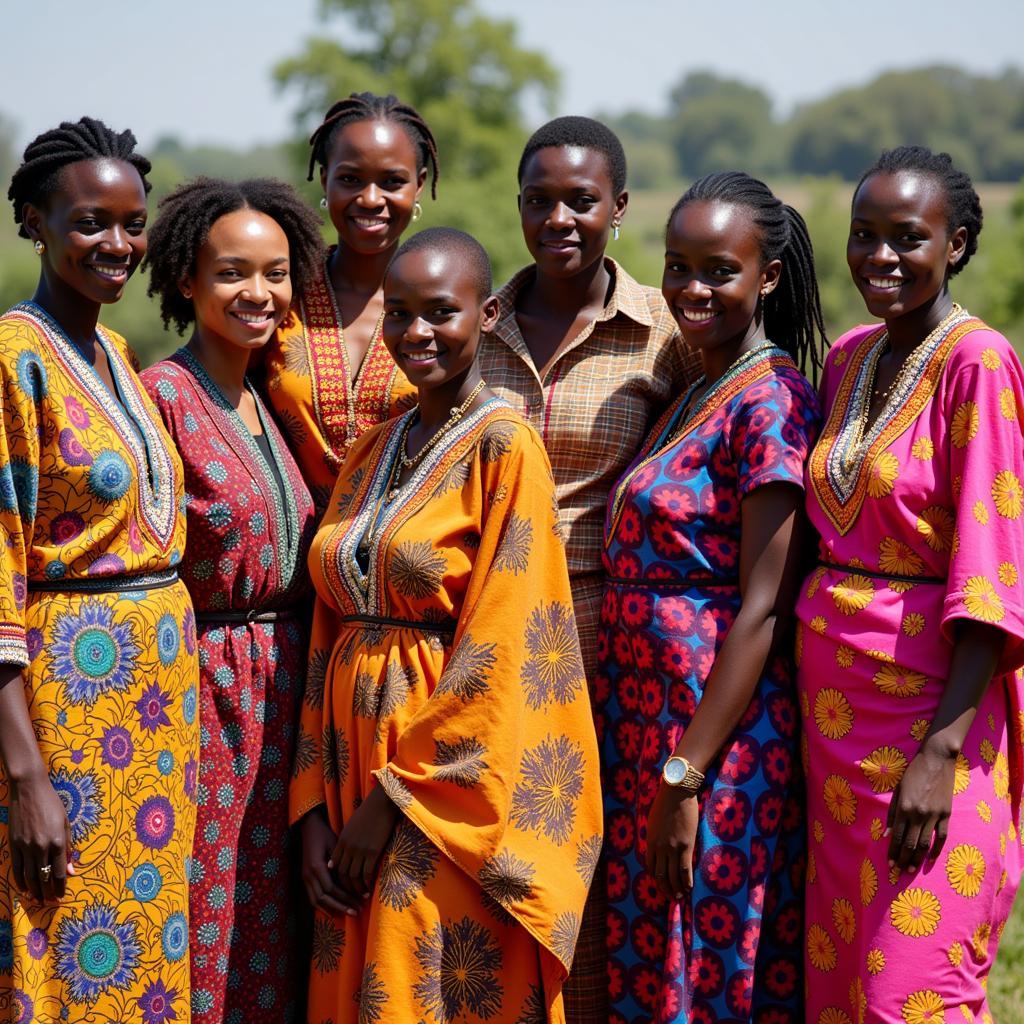 Women Wearing Colorful Kangas in Tanzania
Women Wearing Colorful Kangas in Tanzania
More Than Just Fabric: The Kanga’s Cultural Significance
The kanga is deeply interwoven with the social fabric of many African communities. It’s a cherished gift for weddings, births, and other important occasions. The messages printed on the kanga often convey congratulations, advice, or even subtle social commentary. What sets the kanga apart is its unique ability to communicate without words, making it a powerful tool for expressing emotions, sharing wisdom, and strengthening social bonds.
It’s a common sight to see women wearing kangas in their daily lives, for everything from carrying babies to protecting themselves from the sun. They are also worn during ceremonies and celebrations, their vibrant colors and patterns adding to the festive atmosphere. For many, the kanga isn’t just clothing; it’s an embodiment of their cultural heritage and a symbol of their connection to their community.
Deciphering the Kanga Code: Understanding the Proverbs and Messages
One of the most captivating aspects of the African kanga is the use of proverbs, known as “jina.” These pithy sayings, often written in Swahili, offer glimpses into the values, beliefs, and social dynamics of different communities. From expressing love and gratitude to offering words of caution or even challenging social norms, the jina adds another layer of depth and meaning to the kanga. Understanding the nuances of these proverbs can provide a fascinating insight into the rich cultural tapestry of East Africa.
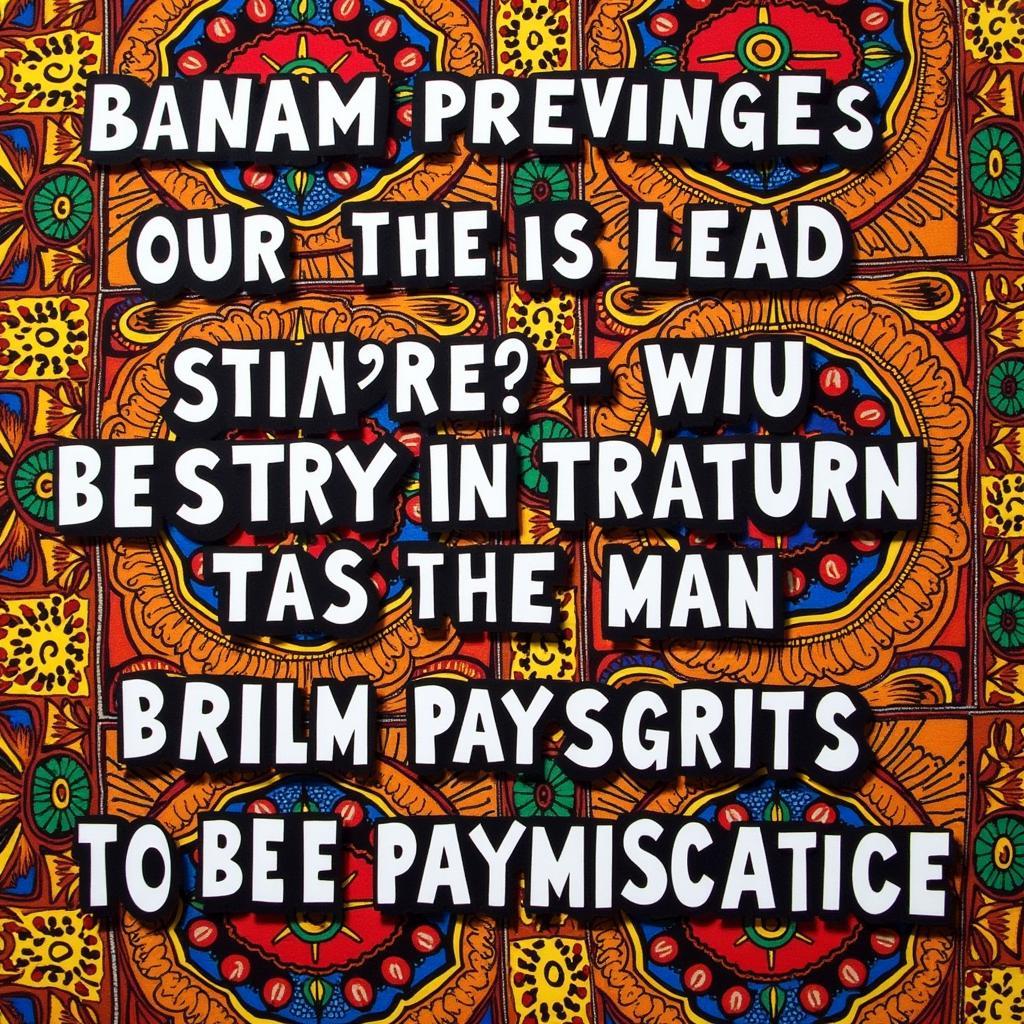 Close-up of Kanga with Swahili Proverb
Close-up of Kanga with Swahili Proverb
Styling the Versatile Kanga: From Traditional to Contemporary
The kanga wrap’s versatility extends to its many uses. Traditionally worn as a skirt, shawl, or headwrap, the kanga has also found its way into contemporary fashion, appearing in everything from dresses and skirts to bags and accessories. This evolution showcases the kanga’s adaptability and enduring appeal in the ever-changing world of fashion. Whether worn in a traditional style or incorporated into a modern design, the African kanga adds a touch of unique elegance and cultural significance to any outfit. You can even find 3D flower African beads lace fabrics for a truly modern take.
How do you tie an African kanga? There are countless ways, each reflecting regional customs and individual preferences. Some tie it around their waist as a skirt, while others drape it over their shoulders as a shawl. The versatility of the kanga allows for endless creativity in styling.
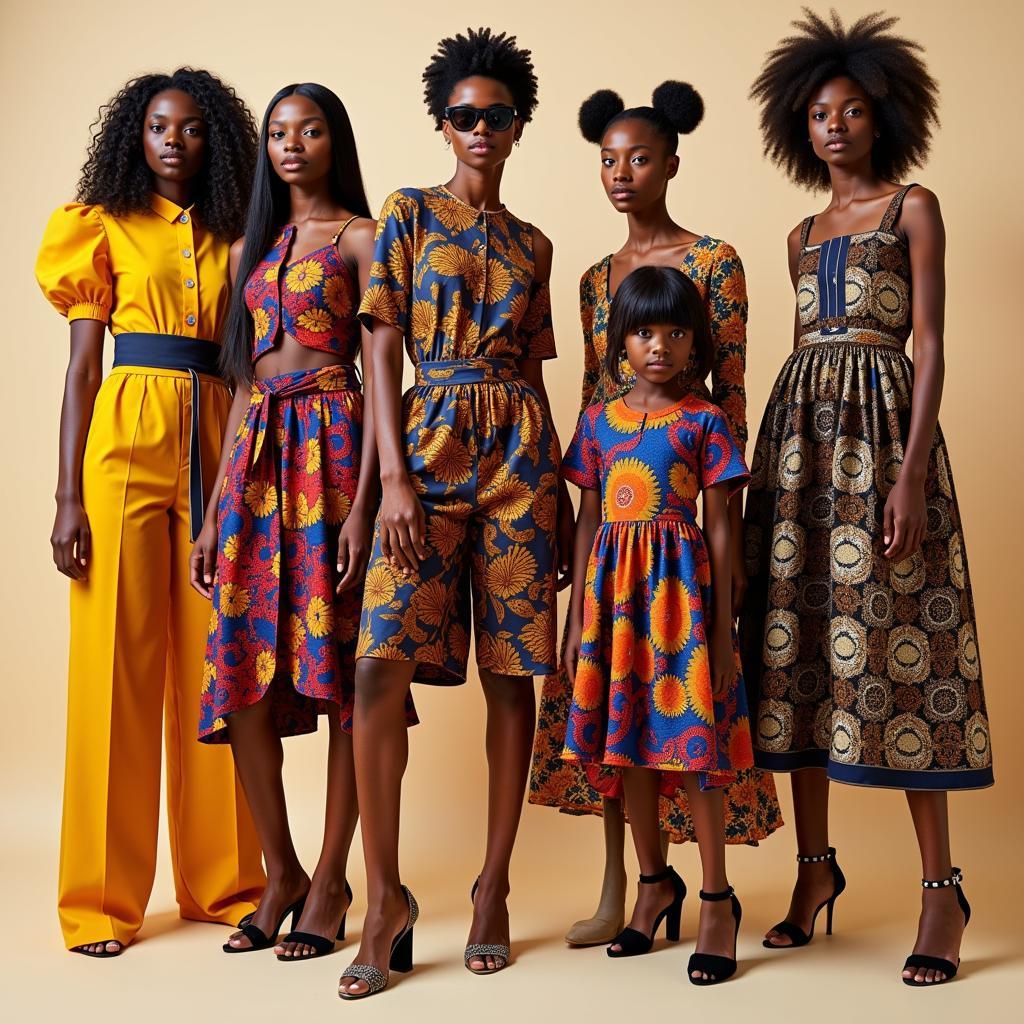 Modern Fashion Incorporating Kanga Designs
Modern Fashion Incorporating Kanga Designs
Conclusion: Embracing the Legacy of the African Kanga Wrap
The African kanga wrap is far more than a piece of cloth; it’s a living testament to the rich cultural heritage of Africa. From its humble beginnings to its current status as a fashion icon and cultural symbol, the kanga continues to evolve while retaining its deep-rooted significance. By understanding its history, symbolism, and versatile uses, we can truly appreciate the vibrant legacy of the African kanga wrap. For those interested in learning more about African fashion, check out African brides magazine. You can also explore other African attire dresses images.
FAQ
- What is a kanga made of? Traditionally, kangas are made of cotton.
- What size is a kanga? A standard kanga measures approximately 1.5 meters by 1 meter.
- Where can I buy an authentic African kanga? Authentic kangas can be purchased in markets across East Africa or from reputable online retailers.
- What does the word “kanga” mean? The origin of the word “kanga” is debated, but one theory suggests it comes from the Swahili word for guinea fowl, known for its spotted feathers.
- How can I learn more about the meanings of kanga proverbs? Several books and online resources are dedicated to deciphering the hidden meanings of kanga proverbs.
- Can men wear kangas? While traditionally worn by women, men also use kangas, often as sarongs or for carrying items.
- Are kangas still popular today? Yes, kangas remain incredibly popular across Africa and are gaining increasing recognition globally.
Common Questions about African Kangas
- How do you wash a kanga? Hand wash your kanga in cold water and hang it to dry. This will help preserve the vibrant colors and prevent shrinking.
- Can I use a kanga as a baby carrier? Absolutely! Kangas are often used as baby carriers, providing a comfortable and secure way to carry infants.
- What are some popular kanga patterns? Geometric designs, floral prints, and animal motifs are just a few of the many popular kanga patterns.
Further Exploration
Want to learn more about African textiles? Explore other African georgr hand mad articles and delve deeper into the world of African clothing facts.
Contact us for support: Phone: +255768904061, Email: kaka.mag@gmail.com or visit us at Mbarali DC Mawindi, Kangaga, Tanzania. We have a 24/7 customer support team.
